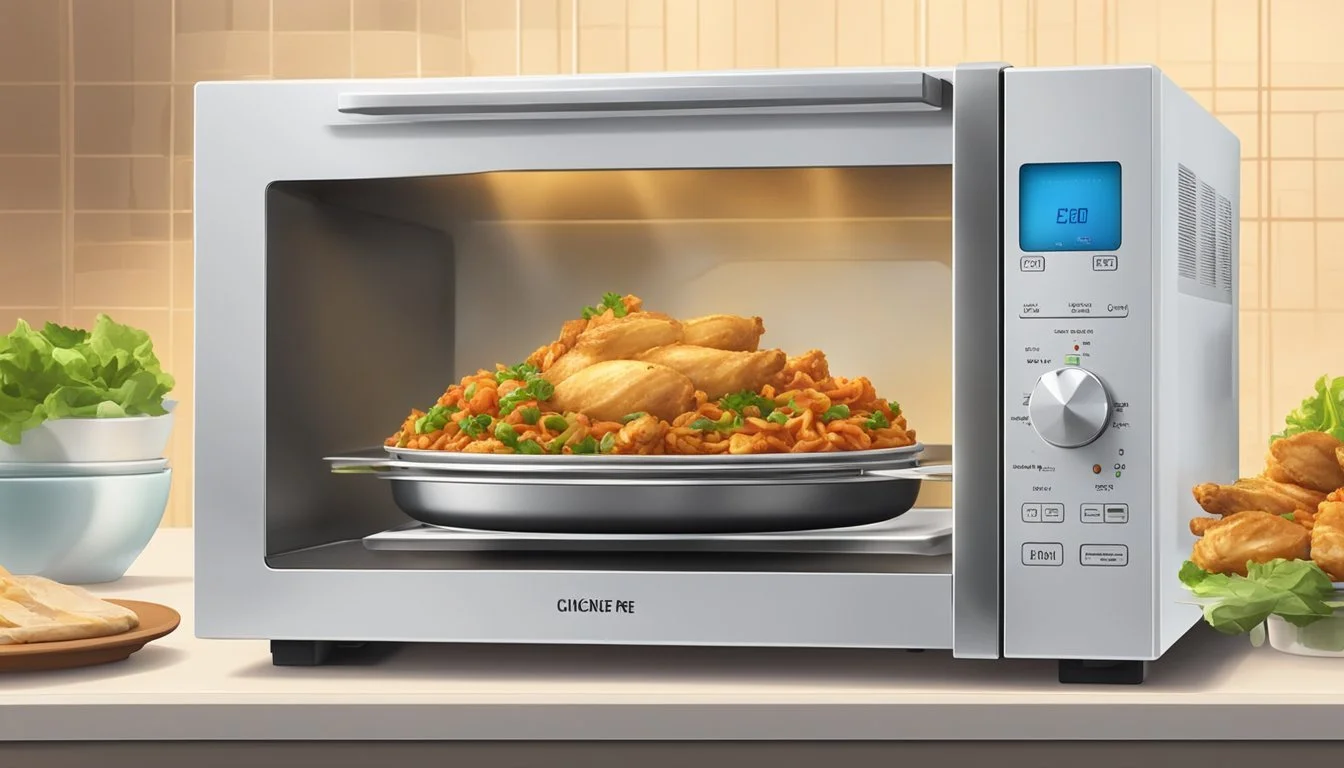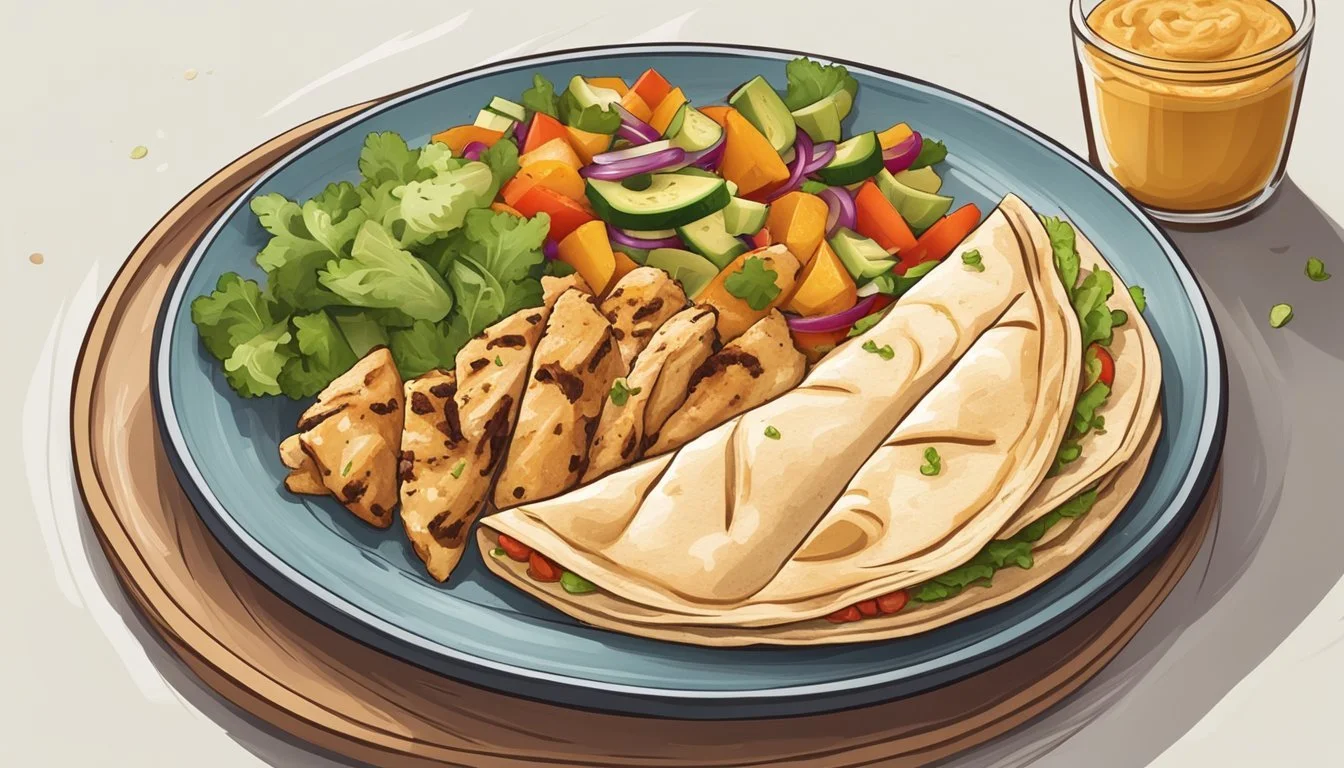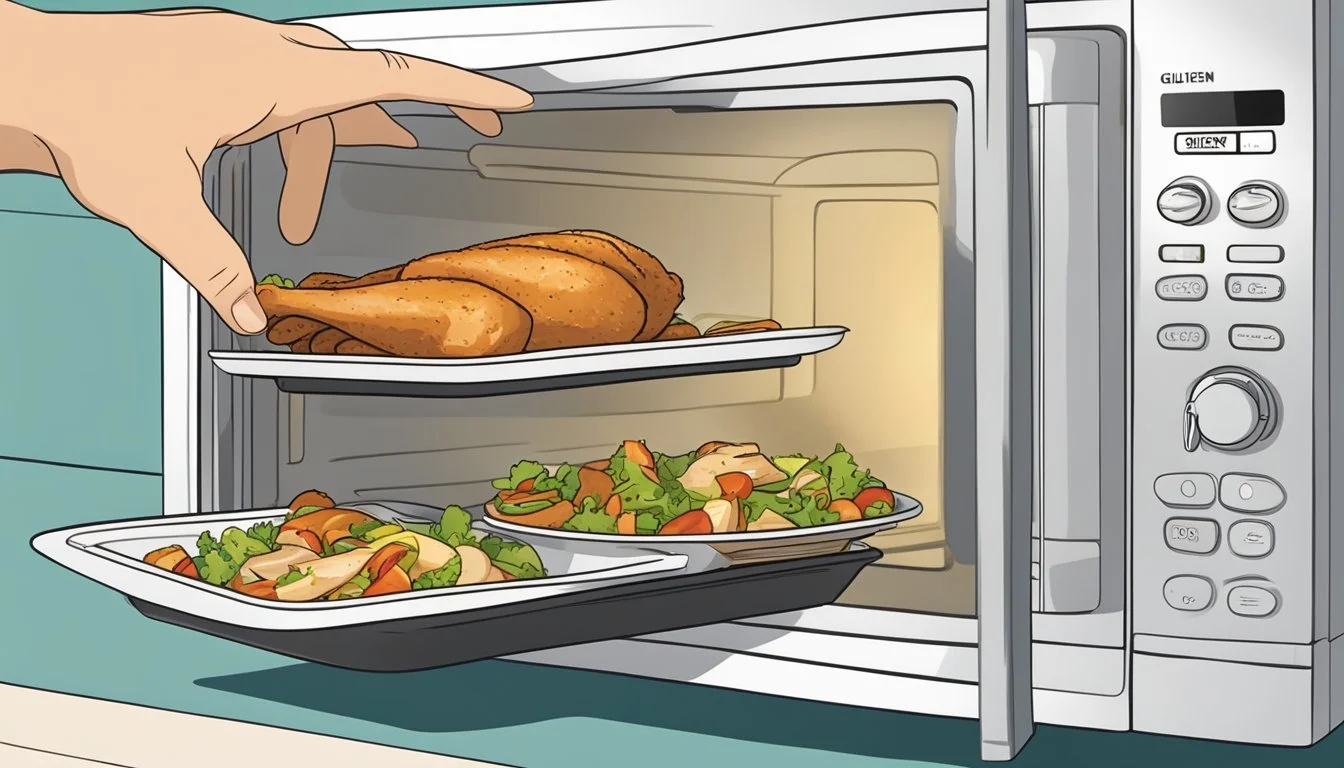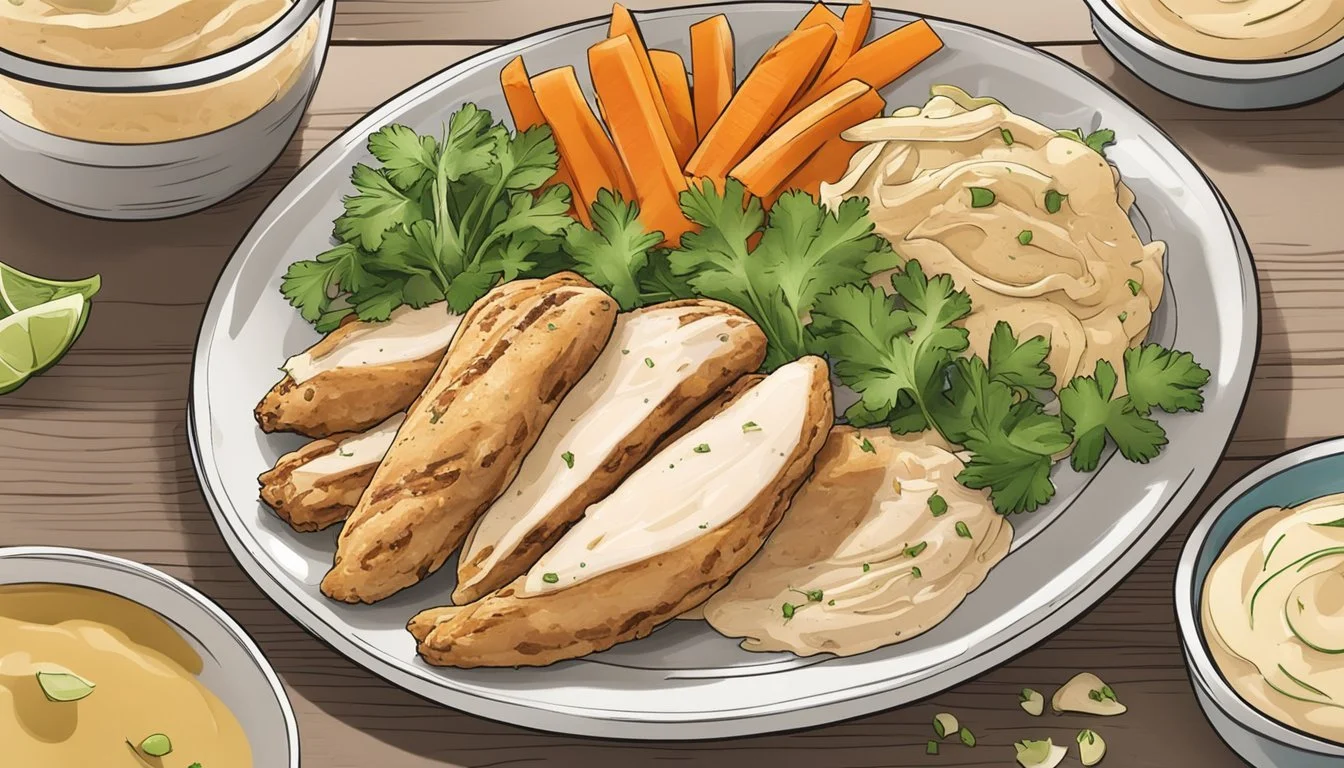How to Reheat Gluten-Free Chicken Shawarma
Tips for Perfect Results
Reheating gluten-free chicken shawarma can be a challenge, but with the right methods, it can be done effectively while maintaining flavor and texture. To reheat gluten-free chicken shawarma, use methods that ensure the chicken remains moist and flavorful without compromising its gluten-free nature.
One effective way is using an air fryer, which provides a balance of juiciness and crispiness. Setting the air fryer to 350°F and reheating the shawarma for 5-7 minutes ensures the chicken reaches an internal temperature of 165°F, making it both safe and delicious.
For those without an air fryer, using a stovetop skillet works well. Heat a small amount of oil in a non-stick skillet over medium heat, then place the chicken shawarma in the skillet, covering it to trap steam. Heating for approximately 3-5 minutes per side will adequately warm the shawarma while preserving its flavors and textures.
Understanding Gluten-Free Chicken Shawarma
Gluten-free chicken shawarma combines traditional Middle Eastern flavors with a focus on dietary needs. Using alternative ingredients ensures it remains gluten-free.
Ingredients and Alternatives
Chicken shawarma typically uses chicken breast or chicken thighs. For a gluten-free version, ensuring all spices and marinades are free of hidden gluten is crucial.
Common shawarma spices include:
Salt
Paprika
Cumin
Cinnamon
Lemon juice is often used in the marinade to tenderize the meat. Shawarma seasoning is a mix of these spices and is naturally gluten-free if no additives are present. Avoid soy sauce and marinades with gluten-containing stabilizers. Look for certified gluten-free spices and sauces.
Nutritional Benefits
Chicken shawarma is a high-protein dish, especially when using chicken breast, which is lower in fat compared to chicken thighs.
Key nutritional highlights:
Protein: Essential for muscle repair and growth.
Calories: Moderate, making it suitable for weight management.
Fat: Varies based on the cut of chicken; choosing leaner cuts can reduce fat intake.
Carbs: Typically low-carb, beneficial for those on keto or low-carb diets.
Using gluten-free ingredients ensures it is suitable for those with gluten intolerance or celiac disease, while maintaining the health benefits.
Preparation Techniques
For the best gluten-free chicken shawarma, focus on marinating the chicken with the right ingredients and cooking it using techniques that ensure maximum flavor and tenderness.
Marinating the Chicken
Marinating the chicken is a critical step for flavorful shawarma. Start with chicken thighs for the juiciest result. Create a yogurt marinade by mixing Greek yogurt, lemon juice, olive oil, crushed garlic, and a blend of spices like cumin, coriander, paprika, turmeric, and cayenne.
Add the chicken thighs to the marinade, ensuring each piece is well-coated. Cover the bowl and refrigerate for at least 2 hours, but for the best flavor, marinate overnight. This allows the seasoning to deeply penetrate the meat.
Cooking Chicken Shawarma
Cooking methods vary, but consistency is key. Preheat the oven to 400°F (200°C). Place the marinated chicken on a sheet pan or baking sheet. Roast for 25-30 minutes, turning halfway through to cook evenly. The internal temperature should reach 165°F to ensure it's cooked through.
Alternatively, use a skillet on medium-high heat. Heat a bit of olive oil and add the marinated chicken, cooking about 5-7 minutes per side until crispy and fully cooked. Each method ensures the chicken remains juicy inside with a flavorful crust.
Reheating Options and Techniques
To ensure your gluten-free chicken shawarma remains juicy, flavorful, and achieves the desired crispy texture, follow these specific reheating methods tailored to different appliances.
Oven Reheating
The oven method is perfect for preserving the moisture and achieving that slightly crispy exterior. Preheat your oven to 375°F (190°C).
Prepare the Shawarma: Place the chicken shawarma on a baking sheet lined with parchment paper.
Covering: To retain moisture, loosely cover the shawarma with aluminum foil.
Heating Time: Bake for about 10-15 minutes or until the internal temperature reaches 165°F (74°C).
Finishing Touch: For extra crispiness, uncover the foil for the last 2-3 minutes of baking.
Microwave Reheating
For a quick and convenient option, the microwave can be used, though it may not achieve the crispy texture.
Covering: Place the chicken shawarma on a microwave-safe plate and cover it with a damp paper towel. This helps to maintain moisture.
Heating: Microwave on high for 1-2 minutes.
Checking: Check the internal temperature to ensure it reaches 165°F (74°C). If needed, continue in 30-second increments until fully heated.
Skillet Reheating
Using a skillet provides the best results for reacquiring the crispy and slightly charred edges while keeping the inside juicy.
Preheat Skillet: Heat a non-stick skillet over medium heat. Add a splash of oil (vegetable or canola oil).
Cooking: Place the shawarma in the skillet.
Flipping: Cook for 2-3 minutes on each side, or until heated through with a crispy exterior and an internal temperature of 165°F (74°C).
Air Fryer Reheating
The air fryer is an excellent choice for achieving a crispy texture quickly while keeping the chicken juicy.
Preheat Air Fryer: Set the air fryer to 350°F (175°C).
Preparing: Arrange the chicken shawarma pieces in a single layer in the air fryer basket.
Heating Time: Heat for about 5-7 minutes, checking halfway through to ensure even heating. The internal temperature should reach 165°F (74°C).
Following these methods assures your gluten-free chicken shawarma remains delicious and safe to eat, with options for getting it crispy, moist, and flavorful depending on the appliance used.
Post-Reheat Preparations
After reheating your gluten-free chicken shawarma, there are a few essential steps to take to ensure the meal remains flavorful and enjoyable. Focus on preparing sauces and assembling the dish with fresh ingredients.
Dressing and Sauces
To maintain the rich flavors typical of chicken shawarma, dressing and sauces play a crucial role. Common choices include yogurt sauce or tahini sauce, both of which can be tangy and creamy. These can be made by blending yogurt or tahini with lemon juice, garlic, olive oil, and a pinch of salt.
For a gluten-free option, always check labels to ensure no hidden gluten ingredients. A drizzle of olive oil over the chicken can add depth to the flavor.
Preparing these sauces in advance can save time, making meal prep more efficient. Store them in airtight containers in the refrigerator until ready to use.
Assembling the Dish
Begin by selecting fresh gluten-free pita bread as the base. If unavailable, lettuce wraps can be a suitable alternative. Place the reheated chicken on the pita or lettuce.
Next, add fresh vegetables like tomatoes, cucumbers, and red onions to provide a crisp texture and balance to the savory chicken. This combination not only enhances taste but also adds nutritional value to the meal.
Adding the previously prepared yogurt or tahini sauce over the assembled ingredients ties the dish together with a tangy finish. Alternatively, a mix of both sauces can be used for a richer profile.
These steps help ensure a well-balanced and flavorful gluten-free chicken shawarma that is easy to prepare and enjoy.
Accompaniments and Side Dishes
When serving gluten-free chicken shawarma, choosing the right sides is essential to creating a balanced and flavorful meal. Consider both taste and texture to elevate the dining experience. Utilize gluten-free alternatives to ensure the meal remains safe for those with gluten sensitivities.
Selecting Complementary Sides
Pairing chicken shawarma with hummus can enhance the flavors. This creamy dip is not only gluten-free but also rich in protein. Serve it with gluten-free pita or vegetable sticks.
Rice is another great option. Opt for basmati or jasmine rice for a fragrant and fluffy side. Cauliflower rice is a healthy, low-carb substitute that absorbs the shawarma spices well.
Salads offer freshness and crunch. A tabbouleh salad made with quinoa instead of bulgur keeps it gluten-free. A simple cucumber and tomato salad with a lemony dressing can also complement the dish beautifully.
Gluten-Free Alternatives
Quinoa is a versatile side that can be used in place of couscous or bulgur. It's gluten-free and provides a nutty flavor and crunchy texture.
Grilled veggies such as zucchini, bell peppers, and eggplant pair well with chicken shawarma. These vegetables soak up the shawarma spices and add a hearty component to the meal.
Gluten-free wraps are perfect for making shawarma wraps. Use rice-based or other gluten-free tortillas to encase the juicy, spiced meat. They are equally delicious and cater to gluten-free dietary restrictions.
For those preferring lighter options, offer lettuce wraps. Crisp and refreshing, these are a healthy and low-carb alternative for enjoying chicken shawarma.
Proper Storage and Food Safety
Proper storage and food safety are crucial to maintaining the quality and safety of gluten-free chicken shawarma. Following these guidelines will ensure that the leftovers remain fresh and safe to eat.
Storing Leftovers
To maximize the shelf life of gluten-free chicken shawarma, refrigerate it within two hours of cooking. Place the shawarma in an airtight container to prevent exposure to air, which can cause spoilage. Refrigerated, this dish can last 3-4 days safely.
For longer storage, freezing is an effective option. Ensure the shawarma is cooled completely before transferring it to a freezer-safe container or resealable freezer bag. Properly stored in the freezer, it should maintain quality for up to 2-3 months. Always label containers with the date to track freshness.
Avoiding Contamination
Practicing good food safety is essential to avoid contamination, especially for gluten-free diets. Always wash hands, utensils, and surfaces before and after handling raw chicken. Use separate cutting boards for raw meat and other ingredients to prevent cross-contamination.
When reheating, ensure the internal temperature of the shawarma reaches at least 165°F. Use a food thermometer to check the temperature accurately. This step is essential to kill any harmful bacteria that may be present. Always reheat only the portion you plan to consume, as repeatedly reheating can increase the risk of foodborne illness.






